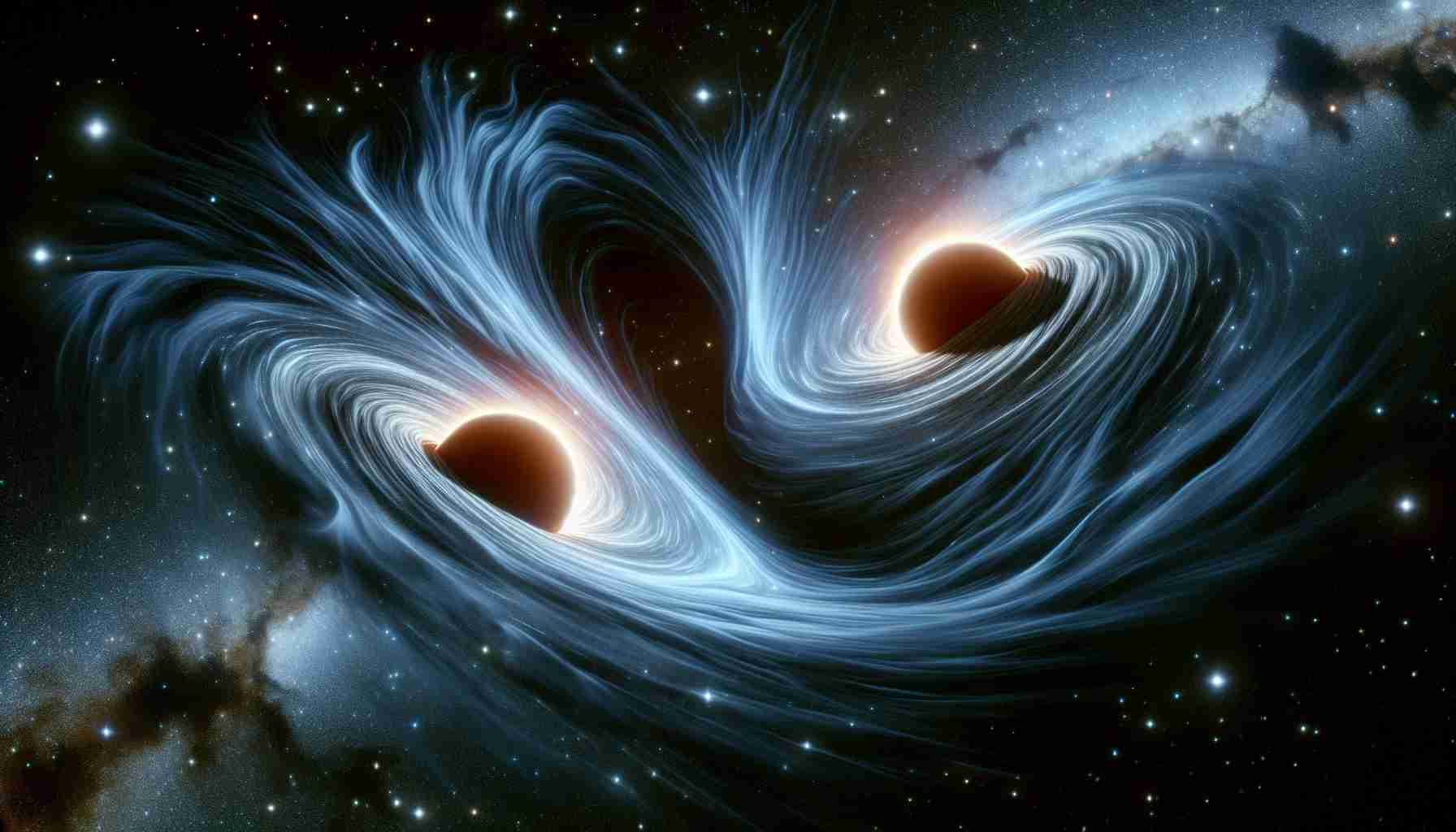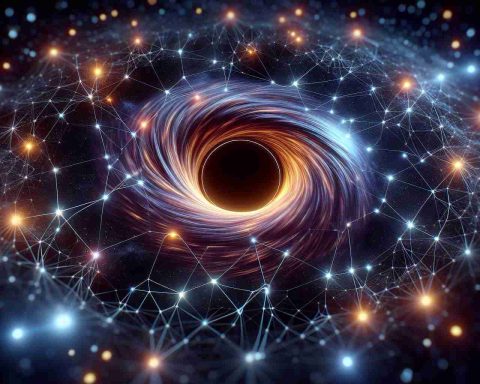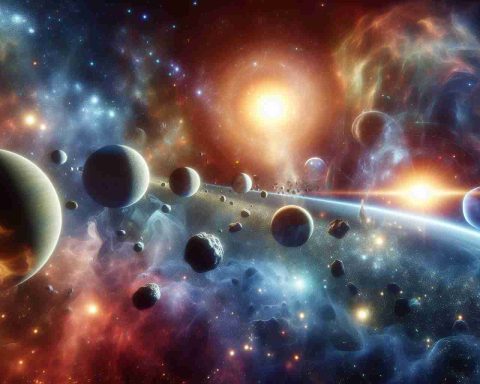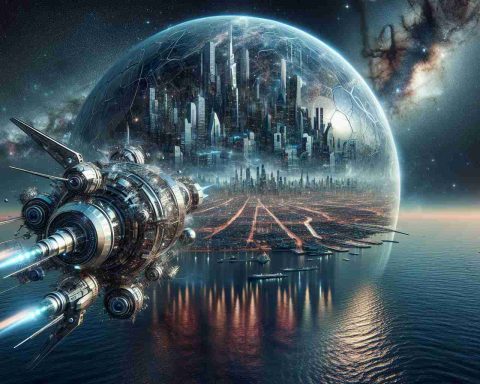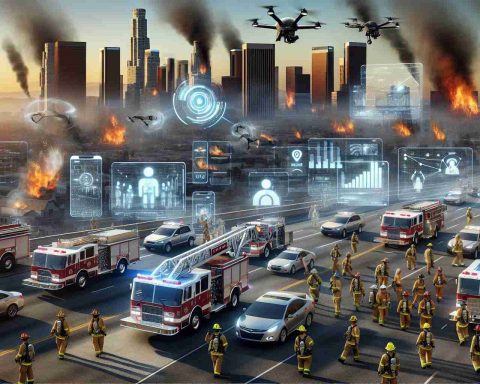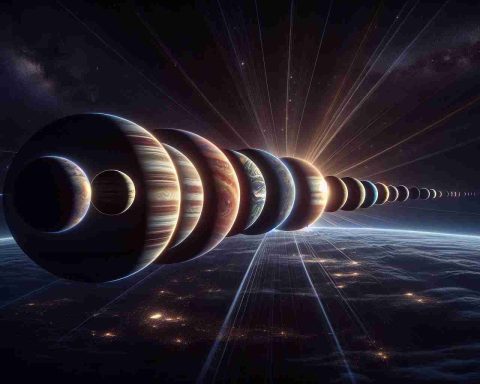- AT 2021hdr features a cosmic dance between two supermassive black holes in the Cygnus constellation.
- These black holes, with a combined mass of 40 million suns, orbit every 130 days, creating observable gravitational bursts.
- Their interaction with a surrounding gas cloud offers insights into supermassive black holes and galaxy mergers.
- A predicted collision of the black holes will occur in about 70,000 years, but current observations drive technological advancements.
- NASA’s Swift Observatory plays a crucial role in observing this cosmic event, enhancing our understanding of black hole dynamics.
- These findings promise to revolutionize our perception of the universe’s complexity and spatial phenomena.
In the mysterious depths of the Cygnus constellation, a celestial spectacle is captivating astronomers worldwide. Known as AT 2021hdr, this cosmic drama stars two enormous black holes locked in a gravitational waltz that promises to reshape our understanding of the universe. These behemoths, with a combined mass a breathtaking 40 million times that of our sun, orbit each other every 130 days, creating a mesmerizing gravitational whirlpool.
As these black holes swing around one another, their immense gravitation tears through a sprawling gas cloud, turning it into a swirling inferno. The result? Bright, distinctive bursts that can be seen across the universe, offering rare glimpses into the enigmatic nature of supermassive black holes. The cosmic ballet of AT 2021hdr not only captures imaginations but also provides vital insights into galaxy mergers, key players in the formation and evolution of the universe.
Astrophysicists predict that this mesmerizing dance will culminate in a colossal collision in about 70,000 years. But why wait? Observing this phenomenon right now fuels technological advancements in telescope technology and data analysis, as scientists strive to capture every detail of this epic cosmic encounter.
NASA’s Swift Observatory, approaching its 20th anniversary, continues to be an invaluable asset in this cosmic journey. It expands our knowledge of the universe while pushing the boundaries of what’s possible in astronomical observation. The potential revelations from these observations could revolutionize our understanding of spatial dynamics and black hole interactions.
As we gaze into the heavens, this celestial performance provides not just a peek into a distant galaxy, but a profound exploration into the universe’s majestic complexity. Stay tuned—these revelations could reshape our knowledge of space as we know it.
The Cosmic Dance of Black Holes Unveiled: Discover the Secrets of AT 2021hdr
How is AT 2021hdr Changing Our Understanding of Black Holes?
AT 2021hdr, with its two massive black holes, is providing a rare view into the complex nature of supermassive black holes. As these colossal objects orbit each other, they emit gravitational waves and light bursts, offering scientists unprecedented data to study. This data is crucial in understanding black hole behavior and galaxy evolution. The interaction of these giants is reshaping theories related to gravitational dynamics, demonstrating phenomena previously hypothesized but never observed.
What Technological Innovations Have Emerged from Observing AT 2021hdr?
The study of AT 2021hdr has spurred numerous technological advancements. Innovations in telescope technology have been essential to capturing this cosmic interaction, particularly in improving resolution and data accuracy. Instruments like NASA’s Swift Observatory have adapted to study these events more efficiently, including advancements in X-ray imaging that offer more detailed views. Enhanced data analysis techniques are also being developed, allowing scientists to parse these vast datasets more effectively, leading to faster discoveries and deeper insights into the cosmos.
How Does AT 2021hdr Impact Future Predictions and Astronomical Research?
The insights gained from AT 2021hdr are proving critical in predicting future cosmic events, such as the timeline and characteristics of black hole mergers and their effects on surrounding matter. This phenomenon aids in the development of more accurate cosmic models, which can be used to predict other celestial events. The understanding gleaned from this spectacle will shape predictive analytics in astronomy, guiding researchers in exploring the universe’s vast, unknown territories.
For further exploration into the cosmic marvels of our universe and the incredible technology making it all possible, check out these invaluable resources:
– NASA
– European Space Agency
– Hubble Space Telescope
